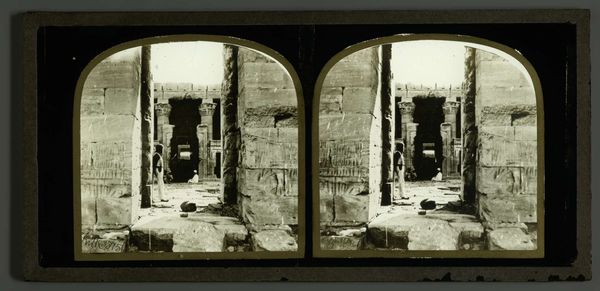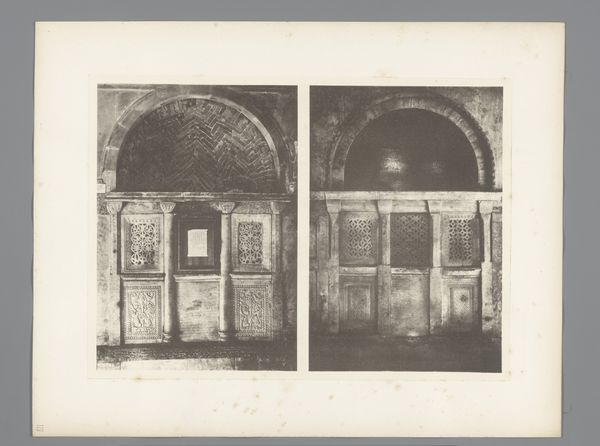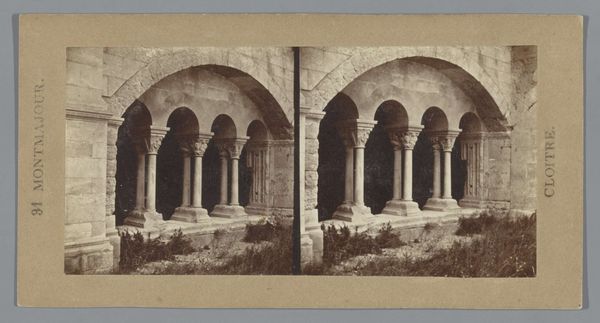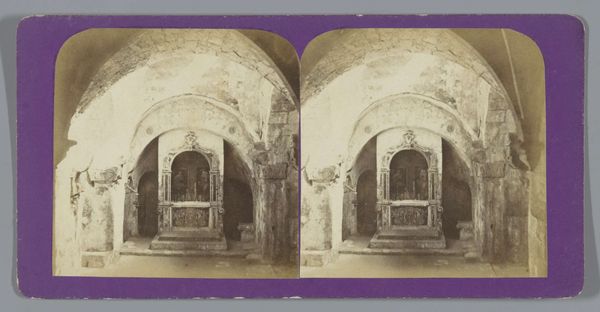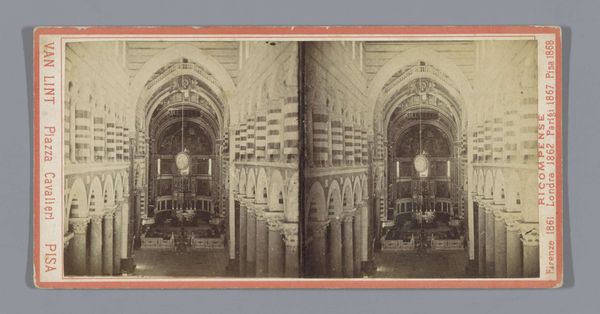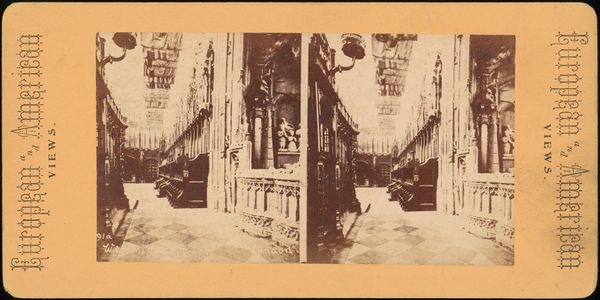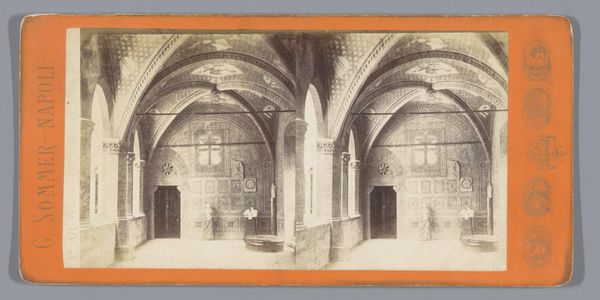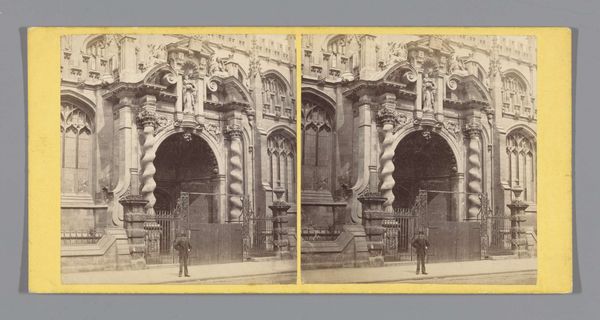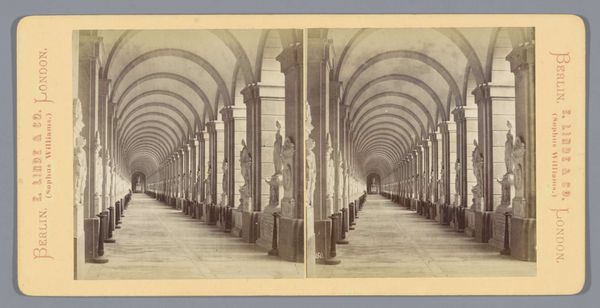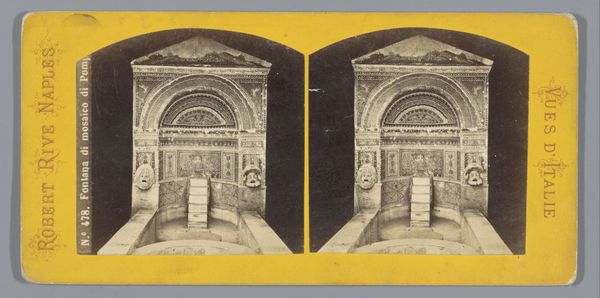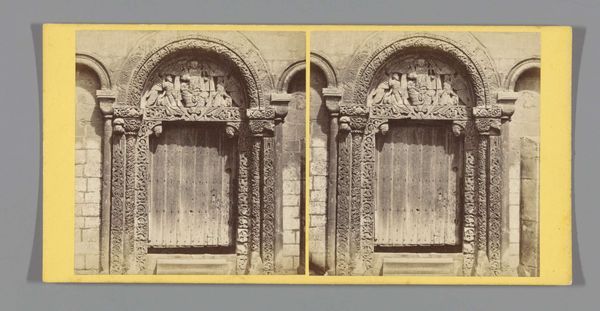
Looking in at West entrance, by Electric light 1886 - 1888
0:00
0:00
silver, print, photography, gelatin-silver-print, albumen-print
#
16_19th-century
#
silver
# print
#
landscape
#
photography
#
gelatin-silver-print
#
men
#
united-states
#
albumen-print
#
realism
Dimensions: 10.1 × 7.5 cm (each image); 10.7 × 17.8 cm (card)
Copyright: Public Domain
Editor: Here we have Henry Hamilton Bennett's "Looking in at West entrance, by Electric light," a gelatin silver print from around 1886-1888. The photograph features an ice structure interior, with two figures in the mid-ground. I'm struck by the repetitive architectural forms—the arches receding into the distance. What compositional elements stand out to you in this work? Curator: The emphatic repetition is indeed central. Consider how the architectonic forms – arches and supporting pillars – generate a rhythm, almost a fugue. The interplay of light and shadow defines the forms and the negative space they enclose. It's a photographic study of how light can sculpt a space. Editor: A fugue, that's a great comparison! It almost feels like an optical illusion, where the eye is constantly being drawn further into the structure. Is there a sense of hierarchy or a focal point within this potentially disorienting pattern? Curator: Note how Bennett positions the figures asymmetrically in relation to the arches. They serve not only as scale indicators, but their placement off-center prevents a monotonous reading of the receding space. Furthermore, consider the tonal range - a masterful use of gelatin silver to capture a transient architectural construct. What philosophical thought does this ephemerality raise? Editor: It highlights the fleeting nature of existence itself! Everything is in constant flux, like this melting ice palace. Thinking about the interplay of forms and that core concept makes it more enriching. Curator: Precisely. By analysing the image's formal qualities – its structure, its treatment of light, the placement of figures – we find it can trigger philosophical investigations concerning time, matter, and our relationship to built spaces. It certainly moved beyond mere photographic record. Editor: I agree. Thank you for that perspective. It is amazing how the elements can trigger such diverse ideas about the architecture, shapes, light, photography techniques, and existentialism.
Comments
No comments
Be the first to comment and join the conversation on the ultimate creative platform.
